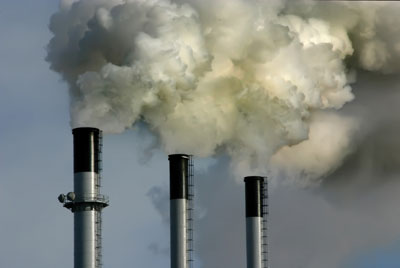
Bioenergy Battle – Wood Versus Coal
March 29, 2012
By William Strauss and Laurenz Schmidt FutureMetrics
Future Metrics has published several papers on the efficacy of the Manomet Study
Future Metrics has published several papers on the efficacy of the Manomet Study and the methodology for modelling the carbon cycle. Our previous critiques were centred on assumptions regarding carbon debt and the timing of carbon recapture through sustainably managed forests.
 |
|
| Studies have said that the burning of coal releases less pollutants than the burning of wood, while others say the reverse is true.
|
In one of our papers we accepted the premise of the Manomet work; that combustion of wood releases more CO2 than coal by 34.6%. And what we have found with further research is that we were wrong for assuming that the Manomet data was correct.
We examined the CO2 emissions per million BTU for a variety of wood species and for four grades of coal.
Although wood species densities vary, the output of CO2 per million BTU (MMBTU) is consistent. On a dry basis, coal and wood yield very similar results in terms of the CO2 produced (in terms of kilograms of CO2 per unit of potential energy).
The results of our analysis show that wood is generally about the same or slightly lower in CO2 emissions on a dry basis, but both wood and coal do not naturally have zero moisture content (MC).
The typical moisture content of coal is:
- Anthracite coal : 2.8% – 16.3% by weight
- Bituminous coal : 2.2% – 15.9% by weight
- Lignite coal : 39% or more by weight
It is the water that causes CO2 emissions to increase over the dry weight. The underlying cause that drives this is “the enthalpy of vapourization.” In simple terms, it takes energy to evaporate the water in wood or coal and convert it to vapour, and all of that energy is sent out the chimney and into the atmosphere in the form of water vapour, unless a condensing boiler is used which may claim part of the escaping energy. To get a million BTUs of useful energy from the fuel, a larger mass of wood or coal is necessary to compensate for the losses from vapourizing all that water. And more wood/coal burned means more CO2 produced.
With coal, the higher water content grades also have lower carbon content and higher volatiles. The net effect of this is that, on average, CO2 outputs are relatively consistent across grades.
The table shows the CO2 production for wood from 0 to 50% MC. The Manomet study used a figure of 45%.

|
At 45%, the combustion of wood yields about 9% more CO2 per unit of useful energy than an average of the coal grades’ outputs. While still more than coal, this is significantly less than the 34.6% difference that drives the Manomet “debt-then-dividend” model.
This also illustrates how each location will have different outcomes. Coal grades, wood species, moisture contents of both coal and wood, and boiler efficiency, will all yield unique metrics.
While we stand behind our logic on the carbon neutrality of wood combustion (with the sustainability constraint as the essential foundation of that logic), we also have shown here that dried wood at a moisture content (MC) of below 20% have the same or less CO2 emission per MMBTU as most coal. Wood pellets under 10% MC result in less CO2 emission than any coal under equal circumstances.
Interestingly, it would appear that if a conventional low-efficiency biomass power plant were to use what is otherwise waste heat from the condenser cooling loop to pre-dry the fuel, it would lower the net CO2 output per unit of useful energy produced. The same technology may also apply to pre-treat lower-grade (wetter) coal.
In conclusion, wood in a low moisture content state has lower instantaneous CO2 emissions per unit of energy produced than coal. As we have clearly shown in our previous papers, with sustainable working forest management, the recycling of carbon from wood combustion is virtually instantaneous and continuous, and therefore the net stock of CO2 in the atmosphere from the combustion of wood is not increased.
Print this page